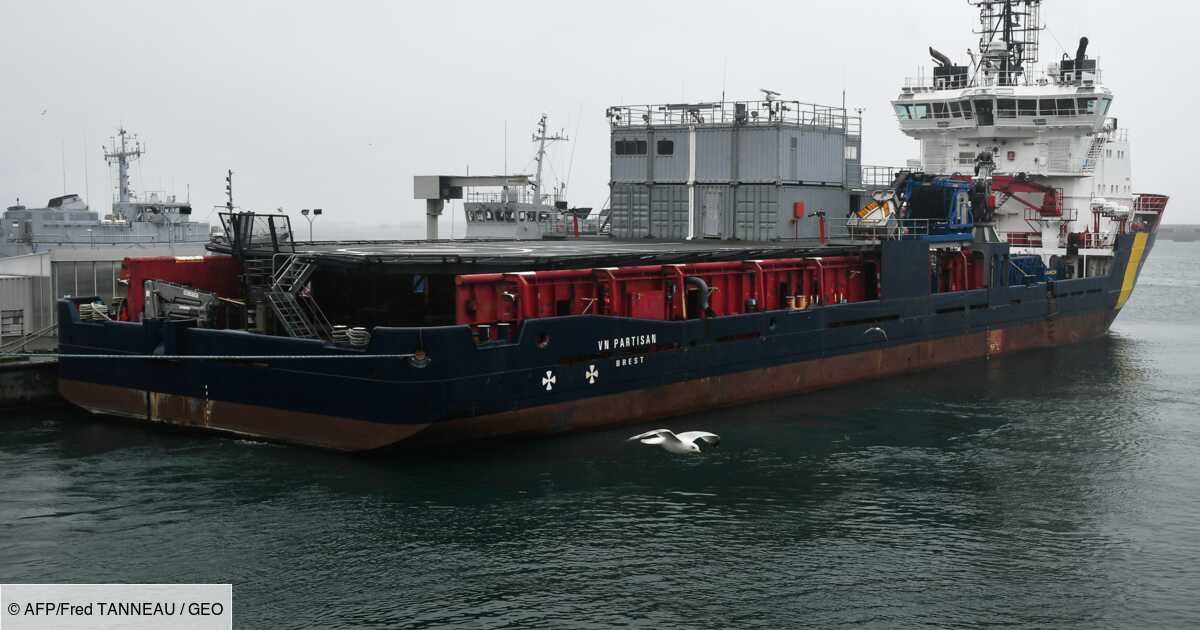Spill response operations have started in the area of the sinking of the Italian ship Grande America, where a new slick of fuel oil was observed, with the hope of minimizing any risk of pollution of the Atlantic coast.
These operations, carried out with the help of four specialized vessels, began in the afternoon despite very complicated weather conditions in the area of the sinking of the 214-meter-long ship, whose holds were filled with 2,200 tons of heavy fuel oil. The Grande America sank on Tuesday 333 kilometers off La Rochelle.
“However, their effectiveness will remain dependent on weather conditions,” noted the maritime prefecture of the Atlantic, in charge of coordinating operations.
While two slicks had already been observed on Wednesday and Thursday, a new one was spotted on Friday during a surveillance flight. With a length of 4.5 kilometers and a width of 500 meters, this new slick of compact appearance and observed near the sinking area, “seems to confirm that there is still a release of heavy fuel oil since the wreck”, which lies at a depth of 4,600 meters, the maritime prefecture said in a press release.
The two slicks observed so far were 13 km long and 7 km wide, for one, and 9 km long and 7 km wide, for the other. They were drifting due east on Thursday at a speed of 35 kilometers a day. On Friday, however, they could not be observed again due to very rough seas with four-metre waves.
Two containers were also located adrift on Friday: one 30 km northeast of the wreckage, the other 90 km east. Urgent notices to mariners have been issued to warn them of their presence. They should be recovered by the ship’s owner, the Italian company Grimaldi.
– “insecurity” linked to cargoes –
The Grande America, between a ro-ro ship and a container ship, was carrying 365 containers, 45 of which were listed as containing hazardous materials – including a hundred tonnes of hydrochloric acid and 70 others of sulfuric acid -, as well as more than 2,000 vehicles.
He came from Hamburg (Germany) and had to go to Casablanca (Morocco) when he was hit by a fire. Its 27 crew members were rescued safe and sound overnight from Sunday to Monday and brought back to Brest where an investigation was opened.
Forecasts of winds and currents raise fears of an arrival of oil slicks on the coasts of Charente-Maritime and Gironde in the coming days. The two departments have been placed on “pre-alert” to anticipate any risk of pollution and the two prefectures have sent a letter to the coastal municipalities to warn them of the potential risks.
In La Rochelle, backhoe loaders, gloves, absorbent products and floating socks were ready on Friday to fight against a possible arrival of hydrocarbons, the mayor and former skipper Jean-François Fountaine estimating that “the slick will arrive on Wednesday, or even later”.
For their part, the defenders of the environment, continued Friday to denounce “the insecurity” linked to the maritime transport of goods, pointing in particular to the problems of cargo.
The containers can contain a wide variety of goods “and have very different chemical reactions depending on their nature, which considerably increases the difficulties in fighting a fire that breaks out on board”, Yannick Le Manac’h, former Maritime Affairs inspector and expert for Vigipol, a joint association for the protection of the Breton coast and behind a recent study on the risks of fire and explosion on board container ships.
“In 2018, we transported ten billion tonnes of goods in the most absolute insecurity for the sailors on board and the environment”, railed for his part Jean-Paul Hellequin, president of the association for the defense of maritime environment Mor Glaz.
–


